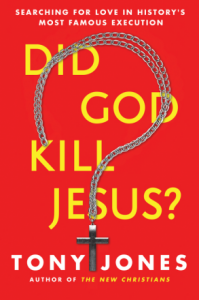This post is part of a series called “You Are Not Your Own,” focusing on rape and sexual assault in Christian relationship/dating books.
Trigger Warning for Rape, Sexual Assault, and Victim Blaming Attitudes
When I first started contemplating my research project, I thought I’d focus on rape myths. I thought I’d get a list of rape myths, read through the books I’d chosen to read for this study (Real Marriage by Mark and Grace Driscoll, I Kissed Dating Goodbye, by Joshua Harris, When God Writes Your Love Story, by Eric and Leslie Ludy, and Dateable by Justin Lookadoo and Hayley DiMarco), and mark off every time the authors of these books either accepted or rejected a particular rape myth. That didn’t actually work out so well because–surprise!–most of these books (with the main exception being Real Marriage) barely mentioned rape or sexual assault.
My focus eventually moved away from rape myths, but I’m glad I started there. It showed me that there is a lot of overlap between the attitudes related to rape myth acceptance and attitudes about men, women, and the relationships between the two that I found in this book.
I’m going to spend a few blog posts talking about those attitudes and that overlap. But I’m going to start with the basics.
What is a rape myth?
Many feminist researchers believe that rape’s foundations lie in societies and in socialization rather than in biology. [1] These researchers believe that certain values and beliefs in a society can create a rape culture where, because of beliefs and attitudes toward rape and rape victims, rape is more likely to occur and rapists (rather than victims) are more likely to find support. [2] (This is a great source, if you want to read more about rape culture)
Rape myths are attitudes and beliefs about rape and sexual assault that help fuel this rape culture. These widely held, culture-based beliefs may place blame on rape victims, excuse the actions of perpetrators, or blur the lines between rape and consensual sex.[3]
You’ve probably heard rape myths in your life. Maybe you’ve even believed them.
How could he have raped her? She’s his wife. A man can’t trespass in his own garden!
I think she just regretted having sex, so she lied about being raped.
She was basically asking for it, wasn’t she? Did you see how much she was drinking? I think she wanted to be raped.
I’m not saying it was “okay” for him to rape her, but with a skirt that short it’s going to be hard for a man to stop!
These are just a few examples.
And what these examples of rape myths have in common is that they are just that–myths. Yet we hear these narratives over and over again, and many of us grow up believing them.
Even those of us who personally experience rape may continue to believe them. I remember believing that my rapist couldn’t stop himself when I said “no” because we’d gone “too far” already, and telling myself for years that I wasn’t really raped because of that). We can’t believe ourselves, and even if we do manage to reject these rape myths as survivors, we fear that no one else will believe us or that they will blame us. Too often, our fears become reality.
We’ve got to tear down this rape culture, and we’ve got to do so by educating individuals about rape myths, and by looking at the influence that institutional power–like that which the evagelical church holds–has on rape myth perpetuation.
Works Cited:
[1] Boswell, A. Ayres, and Joan Spade. 1996. “Fraternities and Collegiate Rape Culture: Why Are Some Fraternities More Dangerous Places for Women?.” Gender and Society 10(2):133-147.
[2] Buchwald, Emilie, Pamela Fletcher, and Martha Roth. 1993. Transforming a Rape Culture. Minneapolis, MN: Milkweed Editions.
[3] Aosved, Allison C., and Patricia Long. 2006. “Co-occurrence of Rape Myth Acceptance, Sexism, Racism, Homophobia, Ageism, Classism, and Religious Intolerance.” Sex Roles 55(7-8):481-492.















